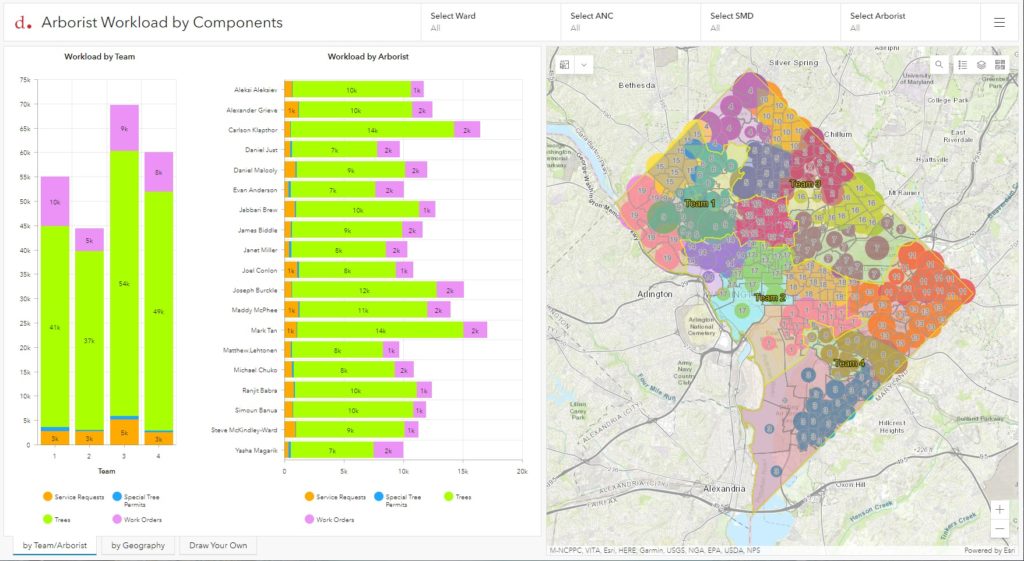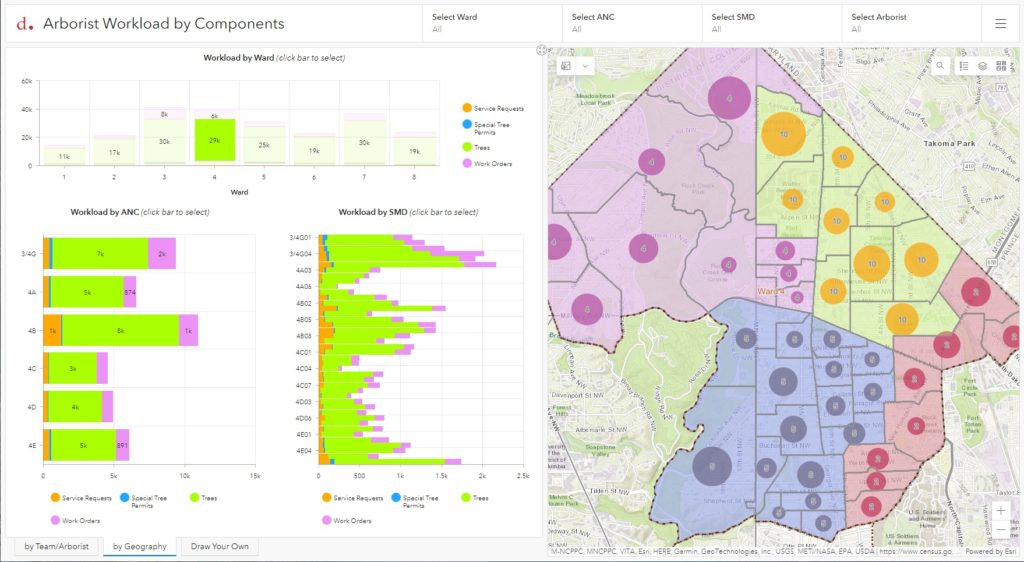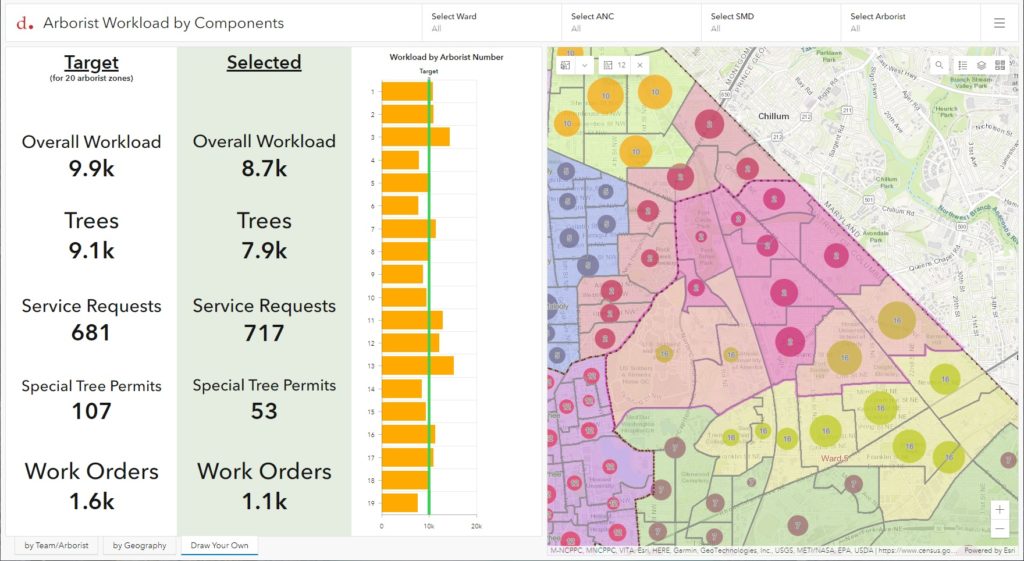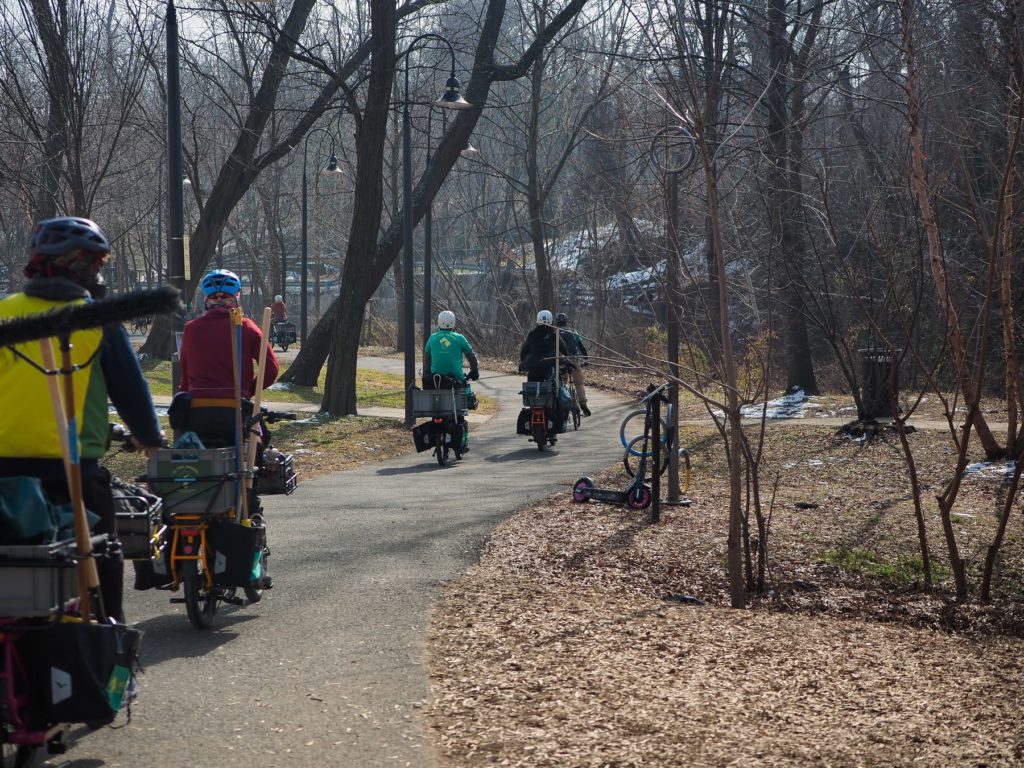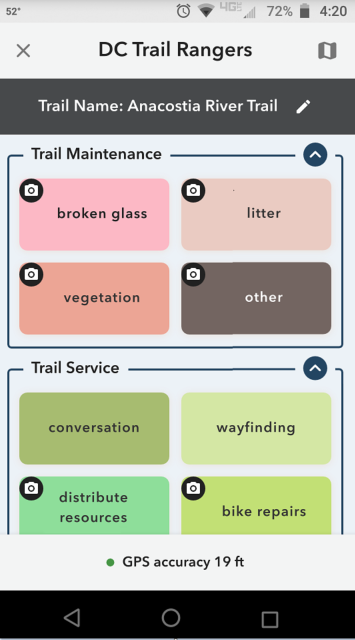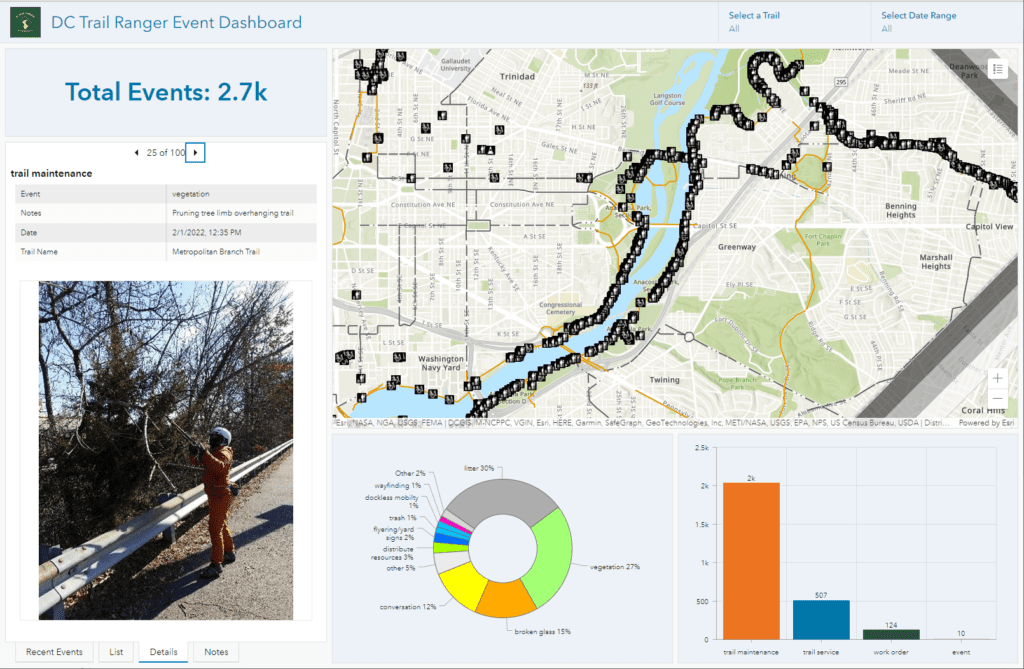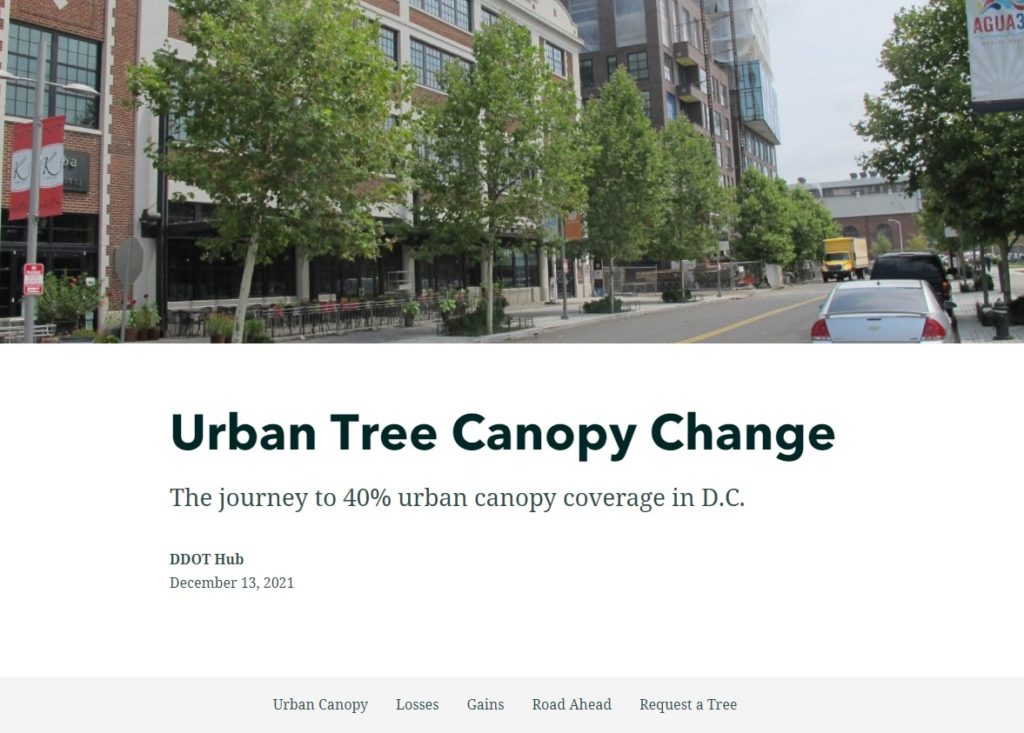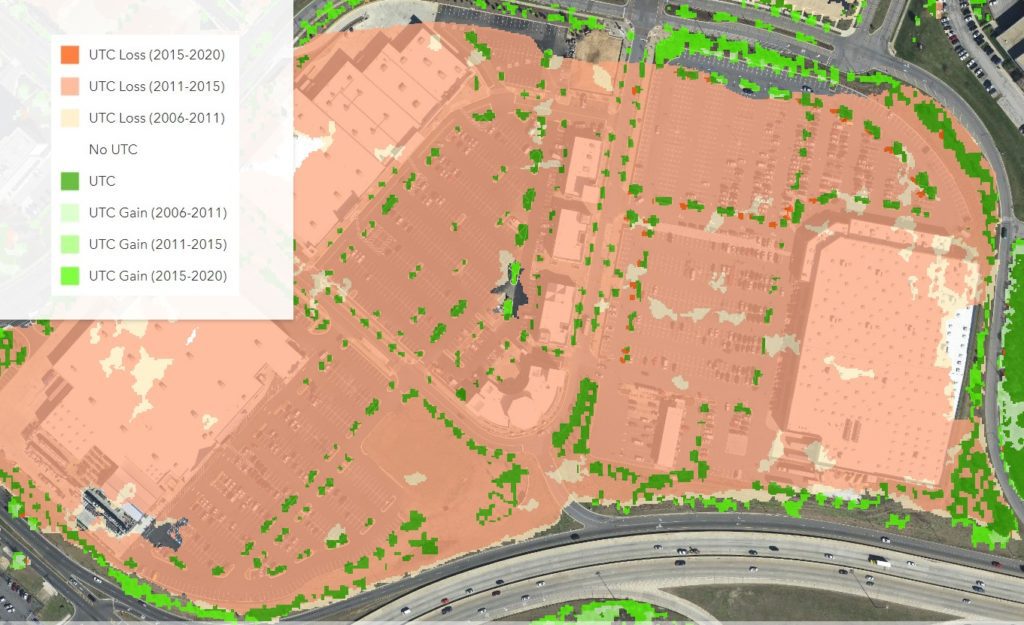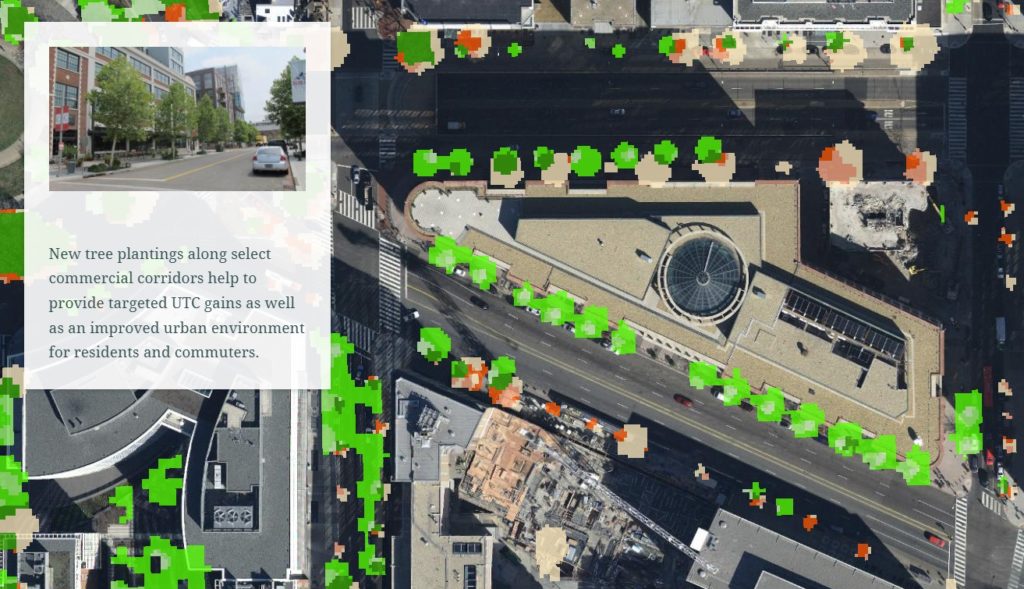DDOT’s Urban Forestry Division (UFD) is the primary steward of Washington, D.C.’s ~175,000 public trees and has a mission of keeping this resource healthy, safe, and growing. At the front lines of this work is a team of almost twenty Urban Foresters who have district boundaries within which they provide tree services, inspections, special tree permit processing, and work order generation for tree planting, pruning, and removals as well as other daily responsibilities. As the tree canopy composition and jurisdictional boundaries change over time, workload optimization between arborists is key to keeping the process flowing smoothly. To help provide visibility into current workloads and explore proposed re-districting options, SymGEO worked with DDOT to build an Arborist Workload Dashboard using ArcGIS Dashboards technology.
The dashboard leverages Arcade expressions to aggregate workload components by arborist teams and proposed arborist boundaries, as well as display the proportional work per boundary sub-area.
Information is also aggregated to geographic boundaries, including Wards, Advisory Neighborhood Commissions (ANCs), and Single-member Districts (SMDs). Interactive charts allow exploration on a local, neighborhood-scale level as needed.
To facilitate the exploration and balancing of workloads, the final component of the dashboard allows interactive boundary area selection and workload summarization by individual components. With a balanced target in mind, the Supervisory Urban Forester can explore scenarios and then update the online information to reflect the preferred boundary scenario.
“This is really slick, thank you! I have already been editing in a webmap, and watching things balance out on the dashboard. Very cool, thank you again!”
-DDOT Supervisory Urban Forester
Talk to SymGEO industry experts today if your agency or organization is interested in leveraging ArcGIS Dashboards to re-district boundaries and optimize workloads – we are certified experts and here to help.
